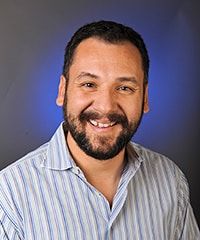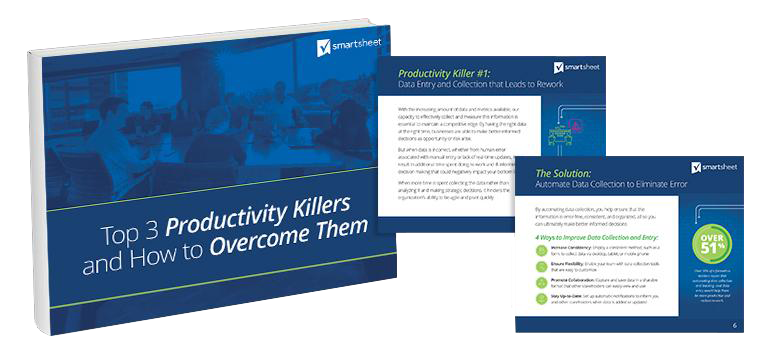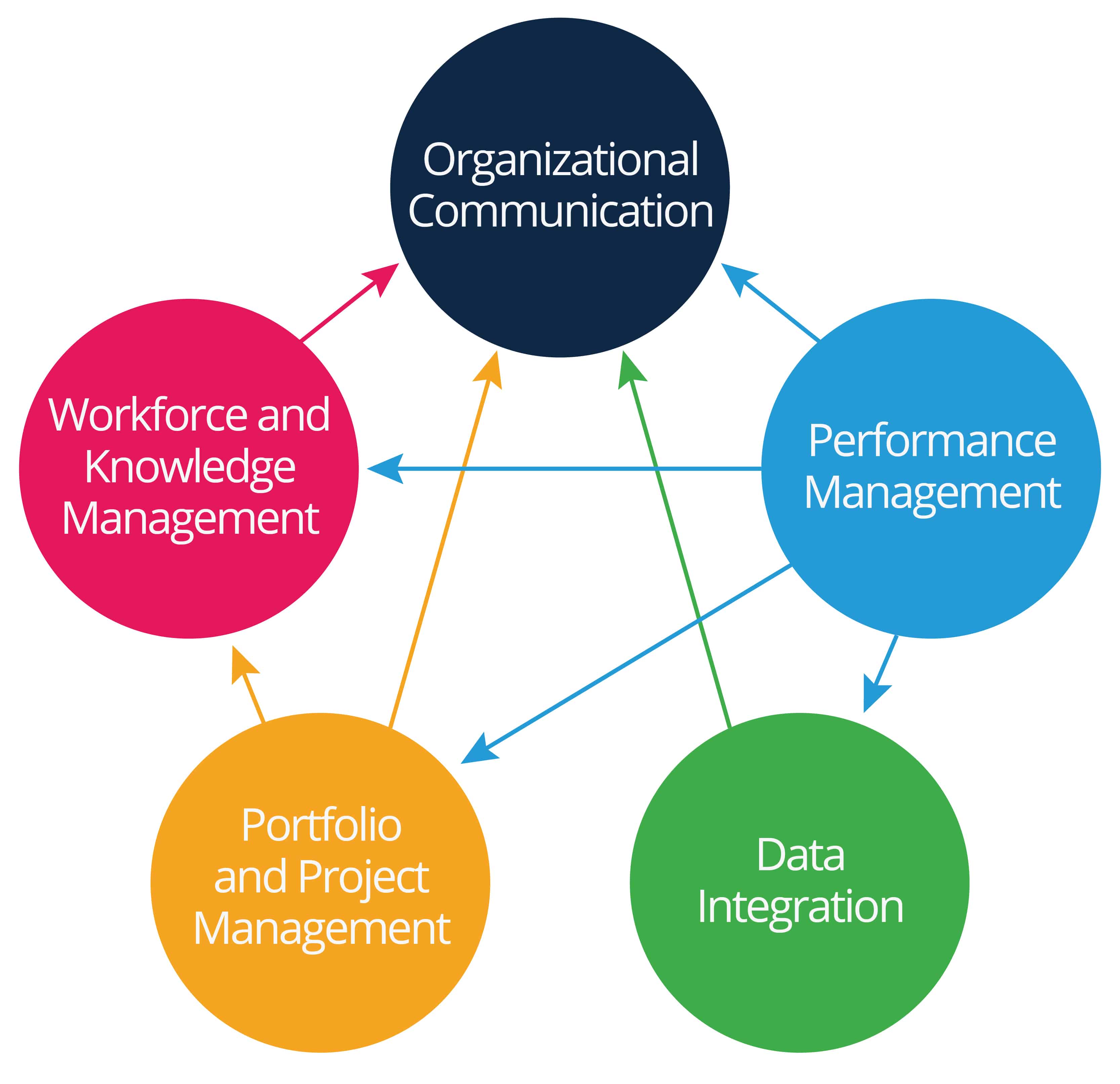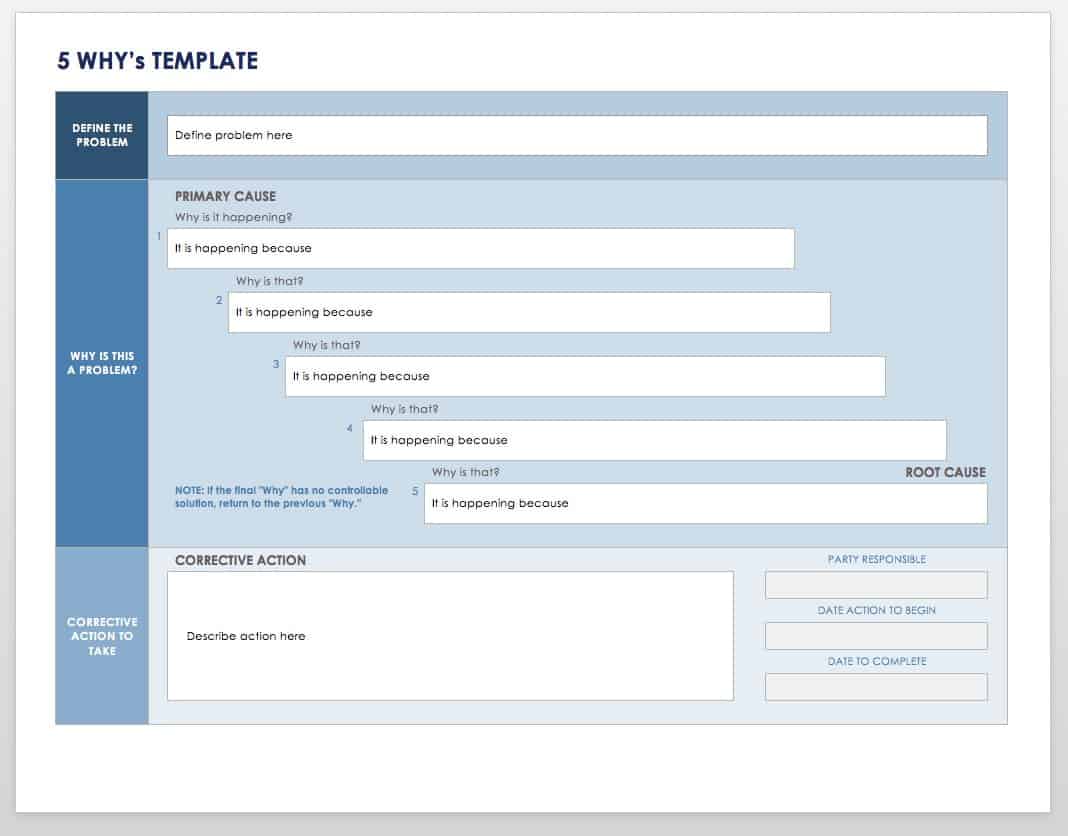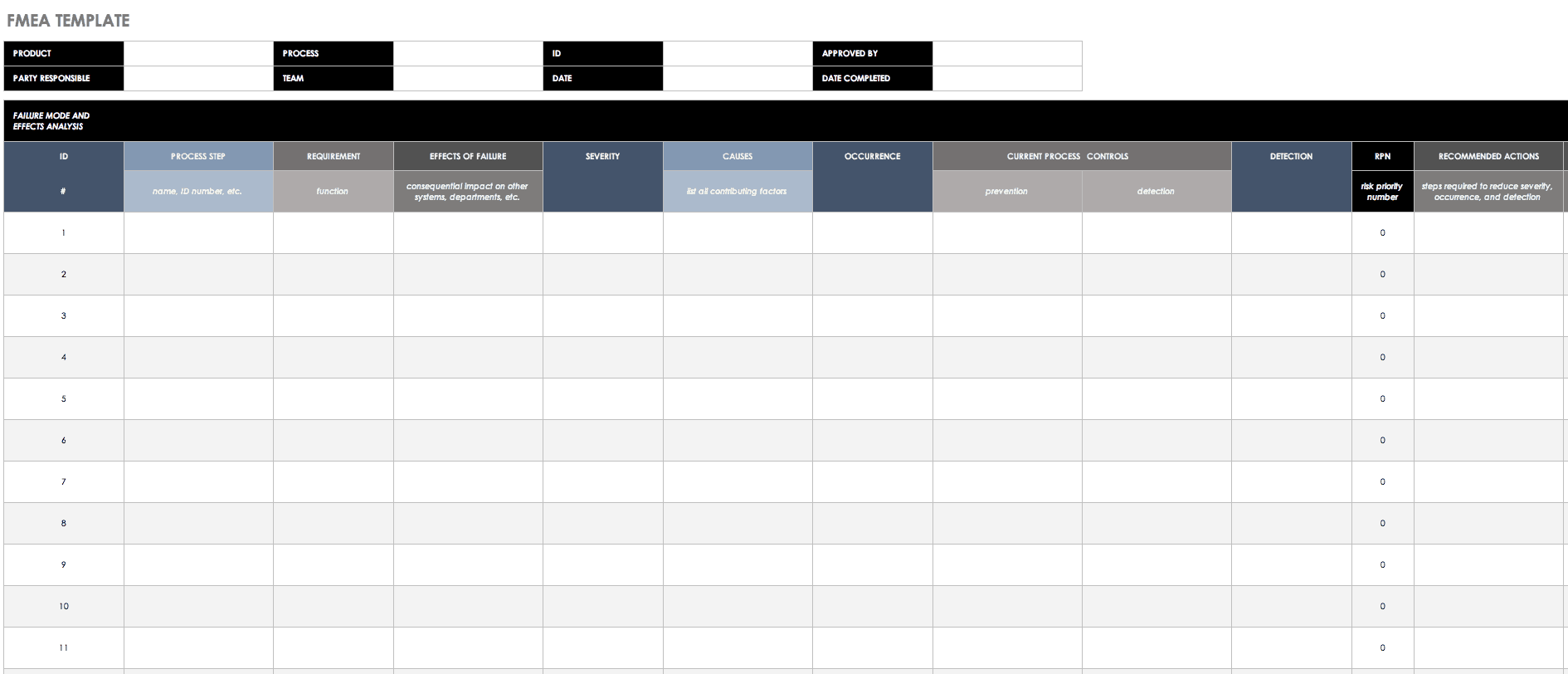What Is Problem Solving and Decision Making?
Problem solving is the process of working through every aspect of an issue or challenge to reach a solution. Decision making is choosing one of multiple proposed solutions — therefore, this process also includes defining and evaluating all potential options. Decision making is often one step of the problem solving process, but the two concepts are distinct.
Collective problem solving is problem solving that includes many different parties and bridges the knowledge of different groups. Collective problem solving is common in business problem solving because workplace decisions typically affect more than one person.
Problem solving, especially in business, is a complicated science. Not only are business conflicts multifaceted, but they often involve different personalities, levels of authority, and group dynamics. In recent years, however, there has been a rise in psychology-driven problem solving techniques, especially for the workplace. In fact, the psychology of how people solve problems is now studied formally in academic disciplines such as psychology and cognitive science.
He explains some of the basic psychology behind problem solving: “When our brain is engaged in the process of solving problems, it is engaged in a series of steps where it processes and organizes the information it receives while developing new knowledge it uses in future steps. Creativity is embedded in this process by incorporating diverse inputs and/or new ways of organizing the information received.”
MacLeod thinks of problem solving as an integral practice of successful organizations. “Problem solving is a collaborative process — all voices are heard and connected, and resolution is reached by the group,” she says. “Problems and conflicts occur in all groups and teams in the workplace, but if leaders involve everyone in working through, they will foster cohesion, engagement, and buy in. Everybody wins.”
10 tips that will make you more productive.
Uncover the top three factors that are killing your productivity and 10 tips to help you overcome them.
Download the free e-book to overcome my productivity killers
Project Management Guide
Your one-stop shop for everything project management

Ready to get more out of your project management efforts? Visit our comprehensive project management guide for tips, best practices, and free resources to manage your work more effectively.
What Is the First Step in Solving a Problem?
Although problem solving techniques vary procedurally, experts agree that the first step in solving a problem is defining the problem. Without a clear articulation of the problem at stake, it is impossible to analyze all the key factors and actors, generate possible solutions, and then evaluate them to pick the best option.
What Are Problem Solving Skills?
To understand the necessary skills in problem solving, you should first understand the types of thinking often associated with strong decision making. Most problem solving techniques look for a balance between the following binaries:
- Convergent vs. Divergent Thinking: Convergent thinking is bringing together disparate information or ideas to determine a single best answer or solution. This thinking style values logic, speed, and accuracy, and leaves no chance for ambiguity. Divergent thinking is focused on generating new ideas to identify and evaluate multiple possible solutions, often uniting ideas in unexpected combinations. Divergent thinking is characterized by creativity, complexity, curiosity, flexibility, originality, and risk-taking.
- Pragmatics vs. Semantics: Pragmatics refer to the logic of the problem at hand, and semantics is how you interpret the problem to solve it. Both are important to yield the best possible solution.
- Mathematical vs. Personal Problem Solving: Mathematical problem solving involves logic (usually leading to a single correct answer), and is useful for problems that involve numbers or require an objective, clear-cut solution. However, many workplace problems also require personal problem solving, which includes interpersonal, collaborative, and emotional intuition and skills.
The following basic methods are fundamental problem solving concepts. Implement them to help balance the above thinking models.
- Reproductive Thinking: Reproductive thinking uses past experience to solve a problem. However, be careful not to rely too heavily on past solutions, and to evaluate current problems individually, with their own factors and parameters.
- Idea Generation: The process of generating many possible courses of action to identify a solution. This is most commonly a team exercise because putting everyone’s ideas on the table will yield the greatest number of potential solutions.
However, many of the most critical problem solving skills are “soft” skills: personal and interpersonal understanding, intuitiveness, and strong listening.
Mattimore expands on this idea: “The seven key skills to be an effective creative problem solver that I detail in my book Idea Stormers: How to Lead and Inspire Creative Breakthroughs are: 1) curiosity 2) openness 3) a willingness to embrace ambiguity 4) the ability to identify and transfer principles across categories and disciplines 5) the desire to search for integrity in ideas, 6) the ability to trust and exercise “knowingness” and 7) the ability to envision new worlds (think Dr. Seuss, Star Wars, Hunger Games, Harry Potter, etc.).”
“As an individual contributor to problem solving it is important to exercise our curiosity, questioning, and visioning abilities,” advises Carella. “As a facilitator it is essential to allow for diverse ideas to emerge, be able to synthesize and ‘translate’ other people’s thinking, and build an extensive network of available resources.”
MacLeod says the following interpersonal skills are necessary to effectively facilitate group problem solving: “The abilities to invite participation (hear all voices, encourage silent members), not take sides, manage dynamics between the monopolizer, the scapegoat, and the bully, and deal with conflict (not avoiding it or shutting down).”
Furthermore, Jaffa explains that the skills of a strong problem solver aren’t measurable. The best way to become a creative problem solver, he says, is to do regular creative exercises that keep you sharp and force you to think outside the box. Carella echoes this sentiment: “Neuroscience tells us that creativity comes from creating novel neural paths. Allow a few minutes each day to exercise your brain with novel techniques and brain ‘tricks’ – read something new, drive to work via a different route, count backwards, smell a new fragrance, etc.”
What Is Creative Problem Solving? History, Evolution, and Core Principles
Creative problem solving (CPS) is a method of problem solving in which you approach a problem or challenge in an imaginative, innovative way. The goal of CPS is to come up with innovative solutions, make a decision, and take action quickly. Sidney Parnes and Alex Osborn are credited with developing the creative problem solving process in the 1950s. The concept was further studied and developed at SUNY Buffalo State and the Creative Education Foundation.
The core principles of CPS include the following:
- Balance divergent and convergent thinking
- Ask problems as questions
- Defer or suspend judgement
- Focus on “Yes, and…” rather than “No, but…”
According to Carella, “Creative problem solving is the mental process used for generating innovative and imaginative ideas as a solution to a problem or a challenge. Creative problem solving techniques can be pursued by individuals or groups.”
When asked to define CPS, Jaffa explains that it is, by nature, difficult to create boundaries for. “Creative problem solving is not cut and dry,” he says, “If you ask 100 different people the definition of creative problem solving, you’ll get 100 different responses - it’s a non-entity.”
Business presents a unique need for creative problem solving. Especially in today’s competitive landscape, organizations need to iterate quickly, innovate with intention, and constantly be at the cutting-edge of creativity and new ideas to succeed. Developing CPS skills among your workforce not only enables you to make faster, stronger in-the-moment decisions, but also inspires a culture of collaborative work and knowledge sharing. When people work together to generate multiple novel ideas and evaluate solutions, they are also more likely to arrive at an effective decision, which will improve business processes and reduce waste over time. In fact, CPS is so important that some companies now list creative problem solving skills as a job criteria.
MacLeod reiterates the vitality of creative problem solving in the workplace. “Problem solving is crucial for all groups and teams,” she says. “Leaders need to know how to guide the process, hear all voices and involve all members - it’s not easy.”
“This mental process [of CPS] is especially helpful in work environments where individuals and teams continuously struggle with new problems and challenges posed by their continuously changing environment,” adds Carella.
Problem Solving Best Practices
By nature, creative problem solving does not have a clear-cut set of do’s and don’ts. Rather, creating a culture of strong creative problem solvers requires flexibility, adaptation, and interpersonal skills. However, there are a several best practices that you should incorporate:
- Use a Systematic Approach: Regardless of the technique you use, choose a systematic method that satisfies your workplace conditions and constraints (time, resources, budget, etc.). Although you want to preserve creativity and openness to new ideas, maintaining a structured approach to the process will help you stay organized and focused.
- View Problems as Opportunities: Rather than focusing on the negatives or giving up when you encounter barriers, treat problems as opportunities to enact positive change on the situation. In fact, some experts even recommend defining problems as opportunities, to remain proactive and positive.
- Change Perspective: Remember that there are multiple ways to solve any problem. If you feel stuck, changing perspective can help generate fresh ideas. A perspective change might entail seeking advice of a mentor or expert, understanding the context of a situation, or taking a break and returning to the problem later. “A sterile or familiar environment can stifle new thinking and new perspectives,” says Carella. “Make sure you get out to draw inspiration from spaces and people out of your usual reach.”
- Break Down Silos: To invite the greatest possible number of perspectives to any problem, encourage teams to work cross-departmentally. This not only combines diverse expertise, but also creates a more trusting and collaborative environment, which is essential to effective CPS. According to Carella, “Big challenges are always best tackled by a group of people rather than left to a single individual. Make sure you create a space where the team can concentrate and convene.”
- Employ Strong Leadership or a Facilitator: Some companies choose to hire an external facilitator that teaches problem solving techniques, best practices, and practicums to stimulate creative problem solving. But, internal managers and staff can also oversee these activities. Regardless of whether the facilitator is internal or external, choose a strong leader who will value others’ ideas and make space for creative solutions.
Mattimore has specific advice regarding the role of a facilitator: “When facilitating, get the group to name a promising idea (it will crystalize the idea and make it more memorable), and facilitate deeper rather than broader. Push for not only ideas, but how an idea might specifically work, some of its possible benefits, who and when would be interested in an idea, etc. This fleshing-out process with a group will generate fewer ideas, but at the end of the day will yield more useful concepts that might be profitably pursued.”
Additionally, Carella says that “Executives and managers don’t necessarily have to be creative problem solvers, but need to make sure that their teams are equipped with the right tools and resources to make this happen. Also they need to be able to foster an environment where failing fast is accepted and celebrated.” - Evaluate Your Current Processes: This practice can help you unlock bottlenecks, and also identify gaps in your data and information management, both of which are common roots of business problems.
MacLeod offers the following additional advice, “Always get the facts. Don’t jump too quickly to a solution – working through [problems] takes time and patience.”
Mattimore also stresses that how you introduce creative problem solving is important. “Do not start by introducing a new company-wide innovation process,” he says. “Instead, encourage smaller teams to pursue specific creative projects, and then build a process from the ground up by emulating these smaller teams’ successful approaches. We say: ‘You don’t innovate by changing the culture, you change the culture by innovating.’”
Barriers to Effective Problem Solving
Learning how to effectively solve problems is difficult and takes time and continual adaptation. There are several common barriers to successful CPS, including:
- Confirmation Bias: The tendency to only search for or interpret information that confirms a person’s existing ideas. People misinterpret or disregard data that doesn’t align with their beliefs.
- Mental Set: People’s inclination to solve problems using the same tactics they have used to solve problems in the past. While this can sometimes be a useful strategy (see Analogical Thinking in a later section), it often limits inventiveness and creativity.
- Functional Fixedness: This is another form of narrow thinking, where people become “stuck” thinking in a certain way and are unable to be flexible or change perspective.
- Unnecessary Constraints: When people are overwhelmed with a problem, they can invent and impose additional limits on solution avenues. To avoid doing this, maintain a structured, level-headed approach to evaluating causes, effects, and potential solutions.
- Groupthink: Be wary of the tendency for group members to agree with each other — this might be out of conflict avoidance, path of least resistance, or fear of speaking up. While this agreeableness might make meetings run smoothly, it can actually stunt creativity and idea generation, therefore limiting the success of your chosen solution.
- Irrelevant Information: The tendency to pile on multiple problems and factors that may not even be related to the challenge at hand. This can cloud the team’s ability to find direct, targeted solutions.
- Paradigm Blindness: This is found in people who are unwilling to adapt or change their worldview, outlook on a particular problem, or typical way of processing information. This can erode the effectiveness of problem solving techniques because they are not aware of the narrowness of their thinking, and therefore cannot think or act outside of their comfort zone.
According to Jaffa, the primary barrier of effective problem solving is rigidity. “The most common things people say are, ‘We’ve never done it before,’ or ‘We’ve always done it this way.’” While these feelings are natural, Jaffa explains that this rigid thinking actually precludes teams from identifying creative, inventive solutions that result in the greatest benefit.
“The biggest barrier to creative problem solving is a lack of awareness – and commitment to – training employees in state-of-the-art creative problem-solving techniques,” Mattimore explains. “We teach our clients how to use ideation techniques (as many as two-dozen different creative thinking techniques) to help them generate more and better ideas. Ideation techniques use specific and customized stimuli, or ‘thought triggers’ to inspire new thinking and new ideas.”
MacLeod adds that ineffective or rushed leadership is another common culprit. “We're always in a rush to fix quickly,” she says. “Sometimes leaders just solve problems themselves, making unilateral decisions to save time. But the investment is well worth it — leaders will have less on their plates if they can teach and eventually trust the team to resolve. Teams feel empowered and engagement and investment increases.”
Strategies for Problem Cause Identification
As discussed, most experts agree that the first and most crucial step in problem solving is defining the problem. Once you’ve done this, however, it may not be appropriate to move straight to the solution phase. Rather, it is often helpful to identify the cause(s) of the problem: This will better inform your solution planning and execution, and help ensure that you don’t fall victim to the same challenges in the future.
Below are some of the most common strategies for identifying the cause of a problem:
- Root Cause Analysis: This method helps identify the most critical cause of a problem. A factor is considered a root cause if removing it prevents the problem from recurring. Performing a root cause analysis is a 12 step process that includes: define the problem, gather data on the factors contributing to the problem, group the factors based on shared characteristics, and create a cause-and-effect timeline to determine the root cause. After that, you identify and evaluate corrective actions to eliminate the root cause.
- Fishbone Diagram: Also called an Ishikawa diagram or a Cause-and-Effect diagram, this is a visual tool to identify the cause(s) for a problem. This exercise is meant to generate multiple potential causes, and can be used in a brainstorming session.
Download Fishbone Diagram Template - Excel
- Interrelationship Diagram: This visual tool shows the relationship among different problems so you can identify common causes and see how certain problems impact others. More sophisticated interrelationship diagrams will also depict the strength of each problem. You can build an interrelationship diagram by writing down all competing issues, and drawing arrows between them to show the direction of influence each has on the others.
- 5 Whys: This is a simple process designed to encourage teams to dig deep into the causes of their problem. Start with your problem, and then ask, “Why?” Continue asking “Why?” five times (or more), until you uncover the true root cause of your current situation.
Problem Solving Techniques and Strategies
In this section, we’ll explain several traditional and creative problem solving methods that you can use to identify challenges, create actionable goals, and resolve problems as they arise. Although there is often procedural and objective crossover among techniques, they are grouped by theme so you can identify which method works best for your organization.
Divergent Creative Problem Solving Techniques
Brainstorming: One of the most common methods of divergent thinking, brainstorming works best in an open group setting where everyone is encouraged to share their creative ideas. The goal is to generate as many ideas as possible – you analyze, critique, and evaluate the ideas only after the brainstorming session is complete. To learn more specific brainstorming techniques, read this article.
Mind Mapping: This is a visual thinking tool where you graphically depict concepts and their relation to one another. You can use mind mapping to structure the information you have, analyze and synthesize it, and generate solutions and new ideas from there. The goal of a mind map is to simplify complicated problems so you can more clearly identify solutions.
Appreciative Inquiry (AI): The basic assumption of AI is that “an organization is a mystery to be embraced.” Using this principle, AI takes a positive, inquisitive approach to identifying the problem, analyzing the causes, and presenting possible solutions. The five principles of AI emphasize dialogue, deliberate language and outlook, and social bonding.
Lateral Thinking: This is an indirect problem solving approach centered on the momentum of idea generation. As opposed to critical thinking, where people value ideas based on their truth and the absence of errors, lateral thinking values the “movement value” of new ideas: This means that you reward team members for producing a large volume of new ideas rapidly. With this approach, you’ll generate many new ideas before approving or rejecting any.
Problem Solving Techniques to Change Perspective
Constructive Controversy: This is a structured approach to group decision making to preserve critical thinking and disagreement while maintaining order. After defining the problem and presenting multiple courses of action, the group divides into small advocacy teams who research, analyze, and refute a particular option. Once each advocacy team has presented its best-case scenario, the group has a discussion (advocacy teams still defend their presented idea). Arguing and playing devil’s advocate is encouraged to reach an understanding of the pros and cons of each option. Next, advocacy teams abandon their cause and evaluate the options openly until they reach a consensus. All team members formally commit to the decision, regardless of whether they advocated for it at the beginning. You can learn more about the goals and steps in constructive controversy here.
Carella is a fan of this approach. “Create constructive controversy by having two teams argue the pros and cons of a certain idea,” he says. “It forces unconscious biases to surface and gives space for new ideas to formulate.”
Abstraction: In this method, you apply the problem to a fictional model of the current situation. Mapping an issue to an abstract situation can shed extraneous or irrelevant factors, and reveal places where you are overlooking obvious solutions or becoming bogged down by circumstances.
Analogical Thinking: Also called analogical reasoning, this method relies on an analogy: using information from one problem to solve another problem (these separate problems are called domains). It can be difficult for teams to create analogies among unrelated problems, but it is a strong technique to help you identify repeated issues, zoom out and change perspective, and prevent the problems from occurring in the future. .
CATWOE: This framework ensures that you evaluate the perspectives of those whom your decision will impact. The factors and questions to consider include (which combine to make the acronym CATWOE):
- Customers: Who is on the receiving end of your decisions? What problem do they currently have, and how will they react to your proposed solution?
- Actors: Who is acting to bring your solution to fruition? How will they respond and be affected by your decision?
- Transformation Process: What processes will you employ to transform your current situation and meet your goals? What are the inputs and outputs?
- World View: What is the larger context of your proposed solution? What is the larger, big-picture problem you are addressing?
- Owner: Who actually owns the process? How might they influence your proposed solution (positively or negatively), and how can you influence them to help you?
- Environmental Constraints: What are the limits (environmental, resource- and budget-wise, ethical, legal, etc.) on your ideas? How will you revise or work around these constraints?
Complex Problem Solving
Soft Systems Methodology (SSM): For extremely complex problems, SSM can help you identify how factors interact, and determine the best course of action. SSM was borne out of organizational process modeling and general systems theory, which hold that everything is part of a greater, interconnected system: This idea works well for “hard” problems (where logic and a single correct answer are prioritized), and less so for “soft” problems (i.e., human problems where factors such as personality, emotions, and hierarchy come into play). Therefore, SSM defines a seven step process for problem solving:
- Begin with the problem or problematic situation
- Express the problem or situation and build a rich picture of the themes of the problem
- Identify the root causes of the problem (most commonly with CATWOE)
- Build conceptual models of human activity surrounding the problem or situation
- Compare models with real-world happenings
- Identify changes to the situation that are both feasible and desirable
- Take action to implement changes and improve the problematic situation
SSM can be used for any complex soft problem, and is also a useful tool in change management.
Failure Mode and Effects Analysis (FMEA): This method helps teams anticipate potential problems and take steps to mitigate them. Use FMEA when you are designing (redesigning) a complex function, process, product, or service. First, identify the failure modes, which are the possible ways that a project could fail. Then, perform an effects analysis to understand the consequences of each of the potential downfalls. This exercise is useful for internalizing the severity of each potential failure and its effects so you can make adjustments or safeties in your plan.
Problem Solving Based on Data or Logic (Heuristic Methods)
TRIZ: A Russian-developed problem solving technique that values logic, analysis, and forecasting over intuition or soft reasoning. TRIZ (translated to “theory of inventive problem solving” or TIPS in English) is a systematic approach to defining and identifying an inventive solution to difficult problems. The method offers several strategies for arriving at an inventive solution, including a contradictions matrix to assess trade-offs among solutions, a Su-Field analysis which uses formulas to describe a system by its structure, and ARIZ (algorithm of inventive problem solving) which uses algorithms to find inventive solutions.
Inductive Reasoning: A logical method that uses evidence to conclude that a certain answer is probable (this is opposed to deductive reasoning, where the answer is assumed to be true). Inductive reasoning uses a limited number of observations to make useful, logical conclusions (for example, the Scientific Method is an extreme example of inductive reasoning). However, this method doesn’t always map well to human problems in the workplace — in these instances, managers should employ intuitive inductive reasoning, which allows for more automatic, implicit conclusions so that work can progress. This, of course, retains the principle that these intuitive conclusions are not necessarily the one and only correct answer.
Process-Oriented Problem Solving Methods
Plan Do Check Act (PDCA): This is an iterative management technique used to ensure continual improvement of products or processes. First, teams plan (establish objectives to meet desired end results), then do (implement the plan, new processes, or produce the output), then check (compare expected with actual results), and finally act (define how the organization will act in the future, based on the performance and knowledge gained in the previous three steps).
Means-End Analysis (MEA): The MEA strategy is to reduce the difference between the current (problematic) state and the goal state. To do so, teams compile information on the multiple factors that contribute to the disparity between the current and goal states. Then they try to change or eliminate the factors one by one, beginning with the factor responsible for the greatest difference in current and goal state. By systematically tackling the multiple factors that cause disparity between the problem and desired outcome, teams can better focus energy and control each step of the process.
Hurson’s Productive Thinking Model: This technique was developed by Tim Hurson, and is detailed in his 2007 book Think Better: An Innovator’s Guide to Productive Thinking. The model outlines six steps that are meant to give structure while maintaining creativity and critical thinking: 1) Ask “What is going on?” 2) Ask “What is success?” 3) Ask “What is the question?” 4) Generate answers 5) Forge the solution 6) Align resources.
Control Influence Accept (CIA): The basic premise of CIA is that how you respond to problems determines how successful you will be in overcoming them. Therefore, this model is both a problem solving technique and stress-management tool that ensures you aren’t responding to problems in a reactive and unproductive way. The steps in CIA include:
- Control: Identify the aspects of the problem that are within your control.
- Influence: Identify the aspects of the problem that you cannot control, but that you can influence.
- Accept: Identify the aspects of the problem that you can neither control nor influence, and react based on this composite information.
GROW Model: This is a straightforward problem solving method for goal setting that clearly defines your goals and current situation, and then asks you to define the potential solutions and be realistic about your chosen course of action. The steps break down as follows:
- Goal: What do you want?
- Reality: Where are you now?
- Options: What could you do?
- Will: What will you do?
OODA Loop: This acronym stands for observe, orient, decide, and act. This approach is a decision-making cycle that values agility and flexibility over raw human force. It is framed as a loop because of the understanding that any team will continually encounter problems or opponents to success and have to overcome them.
There are also many un-named creative problem solving techniques that follow a sequenced series of steps. While the exact steps vary slightly, they all follow a similar trajectory and aim to accomplish similar goals of problem, cause, and goal identification, idea generation, and active solution implementation.
- Identify Goal
- Gather Data
- Clarify Problem
- Generate Ideas
- Select Solution
- Define Problem
- Define Causes
- Generate Ideas
- Choose the Best Solution
- Take Action
- Define Problem
- Identify Options
- Evaluate Options
- Implement Solution
MacLeod offers her own problem solving procedure, which echoes the above steps:
“1. Recognize the Problem: State what you see. Sometimes the problem is covert.
2. Identify: Get the facts — What exactly happened? What is the issue?
3. and 4. Explore and Connect: Dig deeper and encourage group members to relate their similar experiences. Now you're getting more into the feelings and background [of the situation], not just the facts.
5. Possible Solutions: Consider and brainstorm ideas for resolution.
6. Implement: Choose a solution and try it out — this could be role play and/or a discussion of how the solution would be put in place.
7. Evaluate: Revisit to see if the solution was successful or not.”
Many of these problem solving techniques can be used in concert with one another, or multiple can be appropriate for any given problem. It’s less about facilitating a perfect CPS session, and more about encouraging team members to continually think outside the box and push beyond personal boundaries that inhibit their innovative thinking. So, try out several methods, find those that resonate best with your team, and continue adopting new techniques and adapting your processes along the way.
Improve Problem Solving with Work Management in Smartsheet
Empower your people to go above and beyond with a flexible platform designed to match the needs of your team — and adapt as those needs change.
The Smartsheet platform makes it easy to plan, capture, manage, and report on work from anywhere, helping your team be more effective and get more done. Report on key metrics and get real-time visibility into work as it happens with roll-up reports, dashboards, and automated workflows built to keep your team connected and informed.
When teams have clarity into the work getting done, there’s no telling how much more they can accomplish in the same amount of time. Try Smartsheet for free, today.
